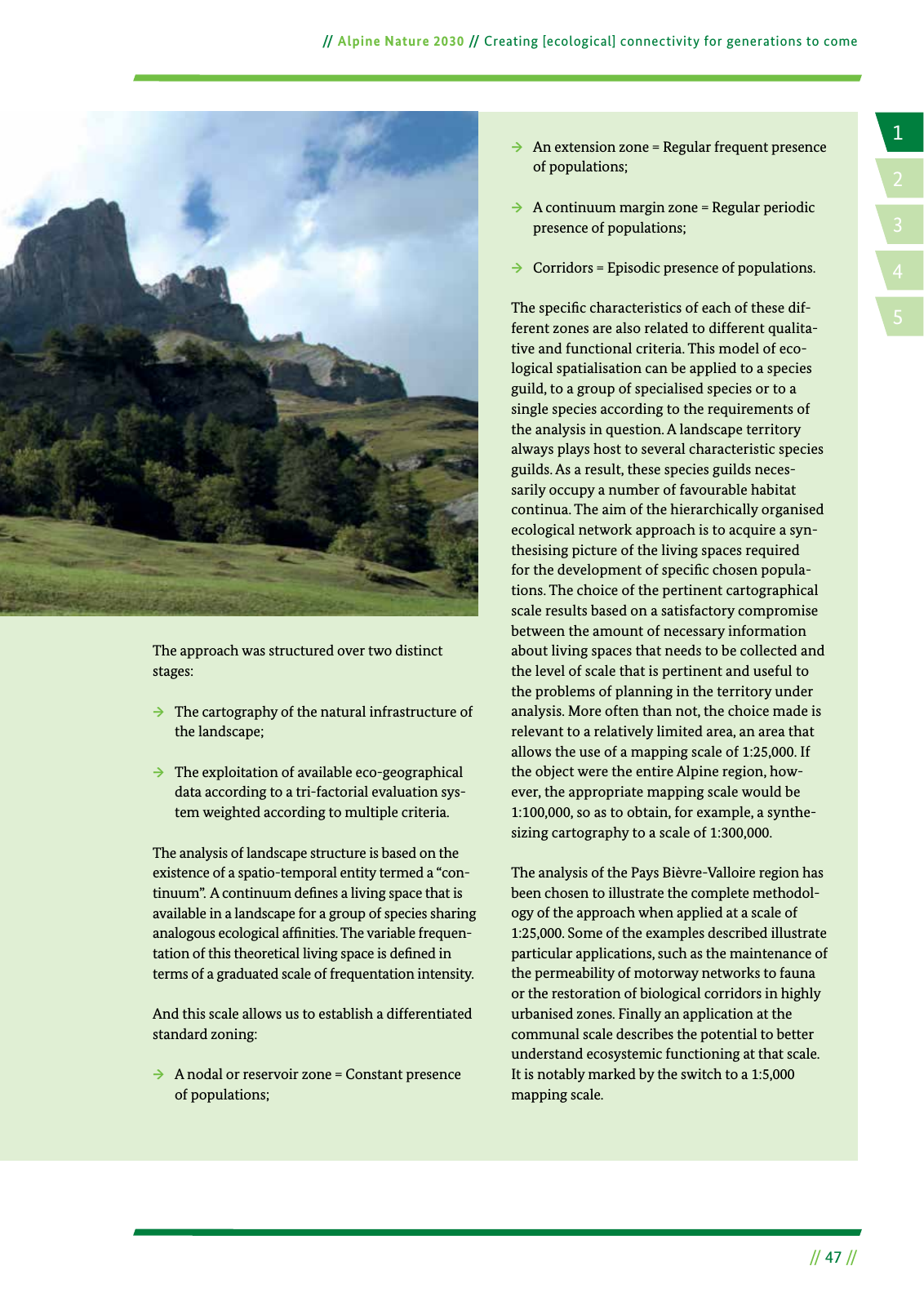14 2 5 3 47 Alpine Nature 2030 Creating ecological connectivity for generations to come The approach was structured over two distinct stages The cartography of the natural infrastructure of the landscape The exploitation of available eco geographical data according to a tri factorial evaluation sys tem weighted according to multiple criteria The analysis of landscape structure is based on the existence of a spatio temporal entity termed a con tinuum A continuum de nes a living space that is available in a landscape for a group of species sharing analogous ecological af nities The variable frequen tation of this theoretical living space is de ned in terms of a graduated scale of frequentation intensity And this scale allows us to establish a differentiated standard zoning A nodal or reservoir zone Constant presence of populations An extension zone Regular frequent presence of populations A continuum margin zone Regular periodic presence of populations Corridors Episodic presence of populations The speci c characteristics of each of these dif ferent zones are also related to different qualita tive and functional criteria This model of eco logical spatialisation can be applied to a species guild to a group of specialised species or to a single species according to the requirements of the analysis in question A landscape territory always plays host to several characteristic species guilds As a result these species guilds neces sarily occupy a number of favourable habitat continua The aim of the hierarchically organised ecological network approach is to acquire a syn thesising picture of the living spaces required for the development of speci c chosen popula tions The choice of the pertinent cartographical scale results based on a satisfactory compromise between the amount of necessary information about living spaces that needs to be collected and the level of scale that is pertinent and useful to the problems of planning in the territory under analysis More often than not the choice made is relevant to a relatively limited area an area that allows the use of a mapping scale of 1 25 000 If the object were the entire Alpine region how ever the appropriate mapping scale would be 1 100 000 so as to obtain for example a synthe sizing cartography to a scale of 1 300 000 The analysis of the Pays Bièvre Valloire region has been chosen to illustrate the complete methodol ogy of the approach when applied at a scale of 1 25 000 Some of the examples described illustrate particular applications such as the maintenance of the permeability of motorway networks to fauna or the restoration of biological corridors in highly urbanised zones Finally an application at the communal scale describes the potential to better understand ecosystemic functioning at that scale It is notably marked by the switch to a 1 5 000 mapping scale

Hinweis: Dies ist eine maschinenlesbare No-Flash Ansicht.
Klicken Sie hier um zur Online-Version zu gelangen.
Klicken Sie hier um zur Online-Version zu gelangen.